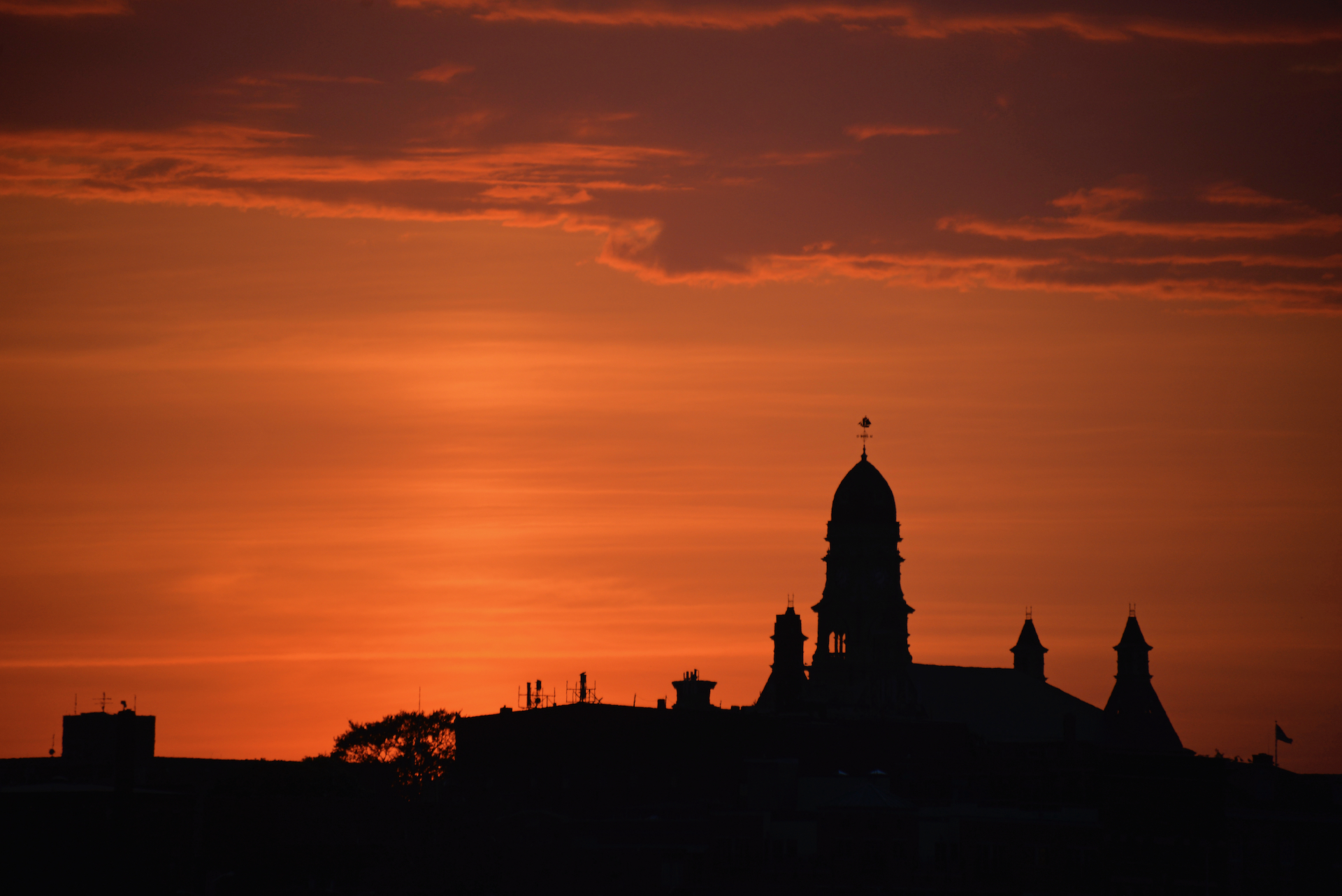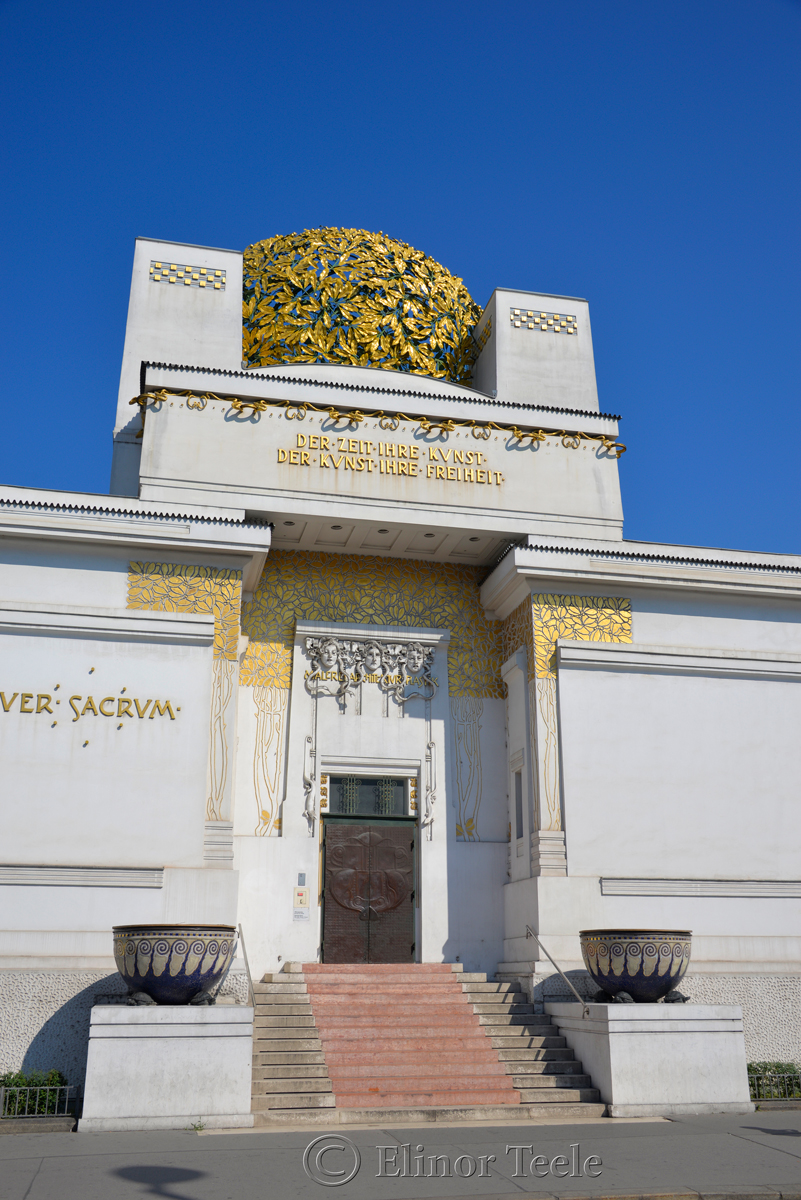In the late 19th century, young artists in Europe were up in arms. Historicism is dead! they cried. Down with stuffy academies! There were Impressionists like Renoir and Monet in Paris, Art Nouveau enthusiasts like Mucha in Prague, and Secessionists in Berlin, Munich, and Vienna.
Gustav Klimt was one of these Viennese rebels, as was Josef Hoffmann, Koloman Moser, and more. On April 3, 1897, they declared a new movement. One year later, they built this exhibition hall – a place where art could have its freedom.
Beethoven Frieze
To celebrate the 14th Vienna Secessionist exhibition in A.D. 1902, Klimt decorated the inside of the building with a massive frieze (7 feet high & 112 feet wide) honoring Beethoven’s 9th symphony. It was hugely controversial at the time. For his interpretation of the human search for happiness, Klimt created grotesque, baggy-breasted women, a hideous storm-wind giant (Typhoeus), and an erotic interpretation of brotherly love.
Felix Salten, the art critic and soon-to-be author of Bambi, reported the reaction of one aristocrat:
“‘Hideous!’… He shouted the word in a high, shrill, sharp voice… he threw it up the walls like a stone. ‘Hideous!'”
Today, the frieze can be viewed in a climate-controlled basement room inside the Secession building. In A.D. 2013, the heirs of the Lederer family, Klimt’s Jewish patrons, sued the Austrian government to return property looted during the Third Reich. They claimed their ancestor, Erich Lederer, had been forced to sell the frieze after World War II at a discount price. Their request was denied.

